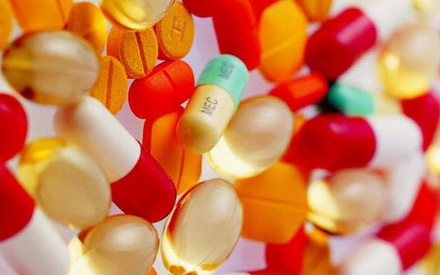
(Ecns.cn) -- China has launched several crackdowns since 2011 to curb the abuse of antibiotics in hospitals, but those tough measures have also stifled the impetus for beneficial drug research and development, reports the state-run Oriental Outlook magazine.
With sales of antibiotic drugs dwindling, many pharmaceutical companies have greatly cut spending on antibacterial R&D, including for new drugs to treat antibiotic-resistant superbugs.
This is a very serious problem, says Chen Daijie of the China Meheco Corporation, because the proper use of new antibiotics is the most important way to reduce antibiotic resistance.
Nationwide campaign
Figures from last year show that 70 out of 100 Chinese inpatients used antibiotics, and that the average annual consumption of antibiotics per capita in China amounted to 138 grams, ten times the level in the United States.
Research also shows that a large number of Chinese surgical patients would not need antibiotics if hospitals conducted proper sanitation measures, and that the abuse of antibiotics can cause serious side effects.
Because of their rampant overuse, the Ministry of Health initiated a nationwide campaign to regulate the clinical use of antibiotic medicines in April of last year.
In the following May and August, the ministry issued two drafts of strict regulations limiting antibiotics to 50 types used by third-grade hospitals (the highest ranking under China's classification system) and 35 at second-grade hospitals.
Prior to the regulations, nearly every hospital stocked and used more than 100 types of antibiotic drugs, so the restrictions were a hard blow to the antibiotics market.
In Shanghai last year, sales of antibiotics at third-grade hospitals dropped from 90 million yuan (US$14.3 million) in the first quarter to 60 million yuan (US$9.5 million) in the third quarter.
On March 6, 2012, a broad new crackdown was carried out on small and local-level hospitals, making it even tougher for pharmaceutical companies to survive.
An insider revealed that antibacterial research requires huge investment, with the development of a completely new antibiotic drug costing 50 million to 100 million yuan (US$7.9 million to US$15.9 million).
But because such investments face high risks, many pharmaceutical companies have cut production of antibiotics and turned their attention to more profitable drugs.
Lack of momentum
Throughout history, the development of new antibiotics has always faced the problem of drug resistance, said Chen Daijie, but the invention and application of antibiotics marked by penicillin has prolonged life expectancy for at least 15 years.
The abuse of antibiotics must be stopped, Chen added, but limitations on the types of antibiotic drugs used in hospitals is not necessarily leading to their proper use.
Chen said he worries that the strict limitations will result in a lack of momentum for antibacterial research and slow down the development of new drugs.
At the end of 2010, a report released by the Centers for Disease Control and Prevention in Europe revealed that about 400,000 people suffer from antibiotic resistant bacteria in European countries every year, and that 25,000 die from it.
In China, drug resistant superbugs claim 80,000 lives every year, according to a conservative estimate by the Ministry of Health.
Yang Yushe, a researcher with the Shanghai Institute of Materia Medica, noted that China has long copied western antibiotic drugs whose patents have expired, while the number of domestically developed antibiotic drugs is no more than five.
Antibacterial research is still in its infancy here, said Yang, and only a rising market can drive its growth, but now many domestic pharmaceutical companies have lost their confidence.
New drugs needed
That pessimistic mindset has become widespread in the pharmaceutical industry, not only in China but also in other countries. And because the cycle of innovation for an antibiotic drug is so lengthy, less than 20 new antibiotic drugs have been put into clinical use globally since 2000.
In 2011, because many drugs proved to be less effective in curing infections, the World Health Organization expressed concern over the increase in antibiotic-resistant bacteria.
Chao Yang, general manager of a biological medicine research company based in Nanjing, said the proper use of antibiotics does not simply mean fewer types and lower doses, since some antibiotic drugs are already facing problems of resistance, and that insufficient doses are likely to turn normal bacteria into superbugs.
The government should conduct more investigations to improve the regulations, and establish a system to encourage the development of new antibiotics, because new drugs are the best solution to antibiotic-resistant bacteria, added Chao.

Copyright ©1999-2011 Chinanews.com. All rights reserved.
Reproduction in whole or in part without permission is prohibited.